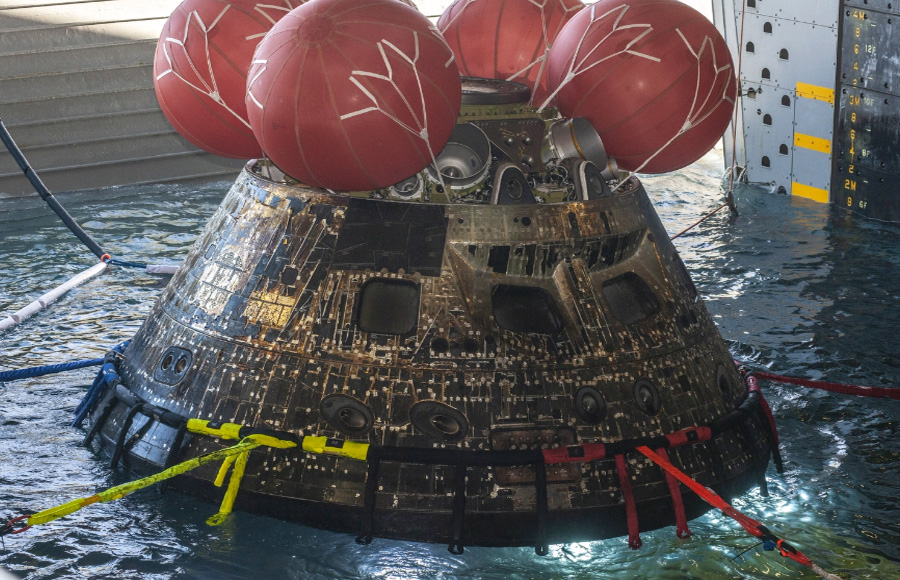NASA's Artemis 1 spacecraft, also known as Orion, was photographed as it approached a US Naval Base in San Diego. NASA recently announced that its Orion spacecraft, which was launched on a round-trip to the Moon on November 16, made a safe splashdown in the Pacific Ocean on December 11.
On November 16, the Space Launch System (SLS) rocket launched the Orion spacecraft on its journey to the Moon, with the small but very fast spacecraft entering lunar orbit on November 25 and finally departing lunar orbit on December 1 for its return journey back to Earth, where it landed on December 11 in the Pacific Ocean. NASA announced that Orion performed better than expected, completing all of its primary mission objectives as well as bonus objectives assigned to it during its return to Earth.
According to reports, Orion arrived at Naval Base San Diego on December 13 while aboard the USS Portland, a US Navy recovery ship that snatched Orion shortly after it sank. Engineers will thoroughly examine Orion to see how the hardware on the inside and outside of the capsule held up during the long journey through space, around the Moon, and back through Earth's atmosphere. Notably, engineers will inspect the heat shield on Orion, which is designed to keep the spacecraft from burning up while traveling through Earth's atmosphere.
Following the success of Artemis 1 with the Orion spacecraft, NASA is preparing for Artemis 2, which will essentially be the same mission but crewed, carrying US astronauts to the Moon. The mission, which is set to launch in 2024, will be the first time humans have visited the Moon since 1972.
Based on the results of the Artemis 1 mission, the Artemis 2 mission will most likely use a new Orion spacecraft with several upgrades and improvements.
We're back after a 1.4 million mile journey around the Moon. pic.twitter.com/f3e5Ov1M2E
— Orion Spacecraft (@NASA_Orion) December 11, 2022
As Orion traveled to the Moon, it captured images and video footage of the Moon's immense size. These illustrations will be used for a variety of purposes, including scientific research, public outreach, and education.










0 Comments
please do not enter any spam link in the comment box